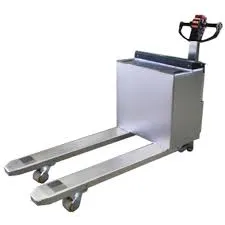


Understanding Lifting Equipment An Integral Component of Modern Industries
Lifting equipment is a crucial part of many industries, serving as the backbone that supports not only the movement of heavy materials but also the safety and efficiency of operations. From construction sites to warehouses and manufacturing plants, these machines enable the lifting, lowering, and transportation of goods that would otherwise be impossible to handle manually. In this article, we will delve into the types, uses, and safety considerations of lifting equipment.
Types of Lifting Equipment
Lifting equipment encompasses a wide range of machinery designed to facilitate the handling of heavy loads. Some of the most common types include
1. Cranes Cranes are used for lifting and moving heavy materials across horizontal distances. They come in various forms, including mobile cranes, tower cranes, and overhead cranes, each designed for specific environments and load capacities.
2. Forklifts Widely used in warehouses and storage facilities, forklifts are essential for transporting materials over short distances. They are equipped with forks that can be raised and lowered to accommodate pallets and other heavy objects.
3. Hoists Hoists are devices that lift or lower loads using a drum or lift-wheel around which a rope or chain wraps. They can be manually operated or powered, making them versatile for both light and heavy lifting tasks.
4. Lifts Elevators and scissor lifts fall under this category. They are primarily used to transport people and goods vertically, making them common in buildings and construction sites.
5. Jack and Trolleys Jacks are mechanical devices employed to lift heavy objects vertically, while trolleys are used to move loads horizontally, often in conjunction with cranes or other lifting equipment.
Applications of Lifting Equipment
The applications of lifting equipment are diverse, spanning multiple sectors. In construction, cranes are indispensable for erecting buildings and moving materials to various floors. In manufacturing, forklifts and hoists facilitate the movement of heavy components along assembly lines. Additionally, in logistics and transportation, lifting equipment streamlines the process of loading and unloading cargo, ensuring that operations run smoothly and efficiently.

The advent of lifting technology has also had a profound impact on industries such as mining and oil extraction, where heavy equipment and materials are routinely moved. Moreover, hospitals and healthcare facilities utilize lifts for patient transfer, highlighting the versatility of these machines.
Safety Considerations
While lifting equipment significantly enhances productivity, safety cannot be overlooked. The improper use of such machinery can lead to severe accidents, injuries, and even fatalities. Here are several crucial safety considerations
1. Training Operators must undergo extensive training to understand the operational aspects and safety protocols of the equipment they use. Certified training programs ensure that individuals are well-equipped to handle lifting machines.
2. Inspection and Maintenance Regular inspections are essential to maintain the integrity of lifting equipment. Operators should check for wear and tear, ensuring that all components are functioning correctly. Preventive maintenance should be an ongoing process to avoid equipment failure.
3. Load Limits It is critical to adhere to the specified load limits for each piece of lifting equipment. Overloading can lead to equipment malfunction and pose serious risks to personnel.
4. Clear Communication Effective communication among team members during lifting operations is vital. Signals should be established, particularly in noisy environments, to ensure everyone is aware of the procedures and movements.
5. Use of Safety Gear Personal protective equipment (PPE), such as helmets, gloves, and steel-toed boots, should be worn by all personnel involved in lifting operations to minimize the risk of injury.
Conclusion
Lifting equipment plays an indispensable role in various industries, improving efficiency and safety in material handling. Understanding the types of equipment available, their applications, and the associated safety considerations is essential for anyone involved in industries that rely on these machines. By prioritizing training, maintenance, and cautious operational practices, organizations can maximize the benefits of lifting equipment while ensuring the safety of their workforce. With ongoing advancements in technology, the future of lifting equipment promises even greater improvements in functionality and safety standards.



